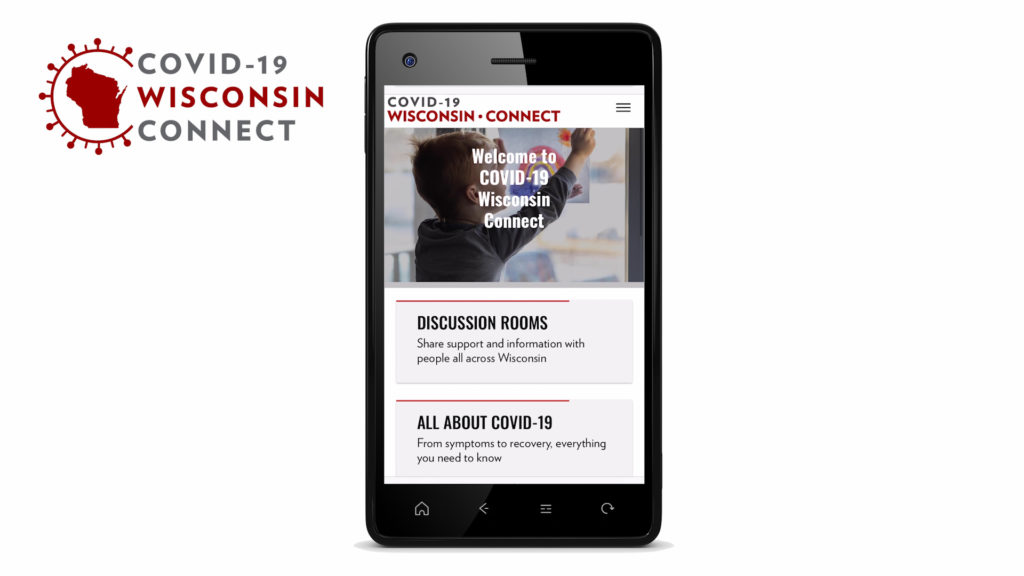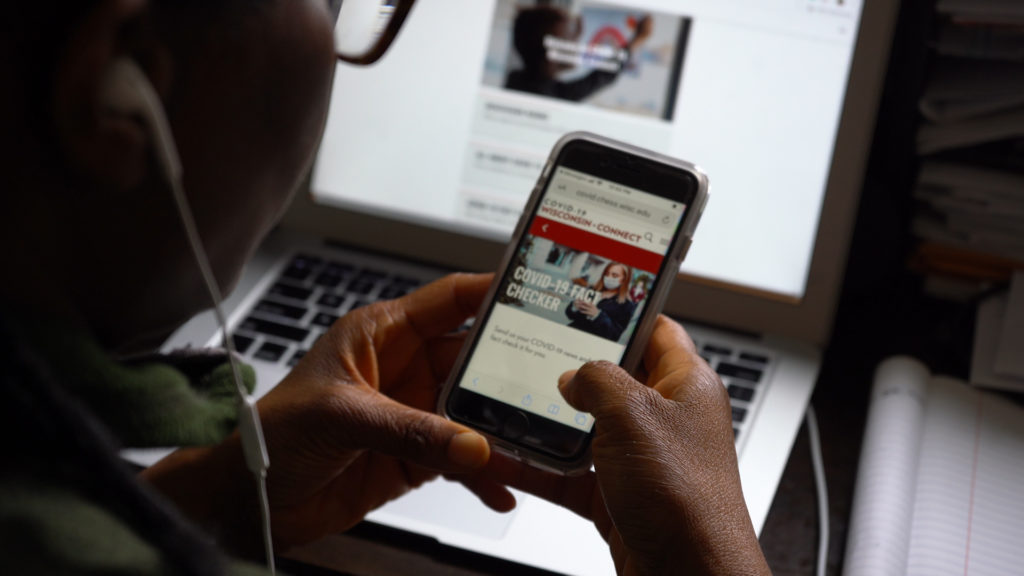By Dante Viscarra
“TEAM-work means Together Everyone Accomplish More” is a common phrase heard around UW-Madison campus these days, more so at the Center for Health Enhancement Systems Studies (CHESS) at UW-Madison
Whether it’s bringing on a new project, completing a complicated analysis, or launching a new survey feature, CHESS’ success, like most companies, depends on the ability for team members to work together as teams and teams to work together as CHESS. “We took on developing the COVID19 app on a short notice and a very tight deadline.” says Dave Gustafson, Jr, project Manager for the app at the Center for Health Enhancement Systems Studies (CHESS).
CHESS took decisive action relying on the experience of its team and current infrastructure of ongoing projects. Here is the interview about the effort and the heroes behind the development of the app. Future entrepreneurs can learn about the phases of ideation, coding and launching a new app as well as the resources available in the State of wisconsin.
Intro about COVID19 app
What are the key tabs of the desktop and mobile app? COVID-19 Wisconsin Connect (CWC) desktop and mobile apps was developed by the Center for Health Enhancement System Studies (CHESS) at the University of Wisconsin-Madison. The app consists of seven sections or tabs:
● Discussion Rooms
● All About COVID-19
● COVID-19 Fact Checker
● Prevent & Protect
● Calming – by Healthy Minds Innovations
● Resource Center
● Coping (coming soon)
What it does
What is unique about this app? COVID-19 Wisconsin Connect is different from other COVID-19 apps and programs in that it provides a holistic collection of local support from Wisconsin friends, family and neighbors, along with vetted information and resources for best practices from trusted government and health experts.

Most widely available apps only track symptoms, outbreaks and death toll data. COVID-19 Wisconsin Connect provides tools to help Wisconsinites cope with physical distancing and isolation by connecting them with other Wisconsinites in a localized discussion board. It debunks myths circulating on social media in Wisconsin and provides streamlined access to vetted information so Wisconsinites can stay informed. In addition, meditations allow users to stay ‘in app’ to get free, vital relaxation exercises.
Under the hood and meet the team CHESS Q& A
Ideation?
- We got a call from Ryan Westergaard who was looking for ideas for supporting people of Wisconsin through the COVID-19 crisis.
- Working with key stakeholders to identify the goals of the project.
- Agree on the main priority
- Always keep the goal/priority as the mantra of the project because people will have lots of ideas on what the app should do.
- Have to have a strong “feature filter”. Only work on projects that relate to the main goal.
Problem solving with an App?
“A problem talked about is a problem cut in half”
Problem solving is a lot easier if you work in a trusted, collaborative environment. Talk about barriers or roadblocks as a group… daily stand-up for example.
Road to launching a Minimum Valuable Product?
Ask yourself, what is the core functionality to meet the goal of the feature. Or if using user stories, what is the core functionality to meet the goal of the feature. Also, when coming up with features, group them by “must-have” and “nice to have”.
Marketing the app? Target Audience?
We worked with faculty and students from the School of Journalism who created a marketing campaign. 3 campaigns targeting 65+, Latino and African-american communities.
What’s the unique value proposition of the App?

- The app is built on evidence-based theoretical concepts in social and health support that have been developed at CHESS for more than 20 years. Our apps aim to help people, especially vulnerable populations, through health crises using social support and providing information resources.
- It’s a smartphone application where most everything else out there is a website.
- Fact checking from researchers at School of Journalism
- Moderated discussion group
Technology behind it? Hybrid apps vs Native apps?
The server back-end code is based on a custom built PHP content management system that has been in development since 2016 and battle tested in other CHESS apps. The front-end code, what the user sees, is built using the Ionic framework which was developed by UW Alumni. Ionic allows us to develop the front-end code once and then deploy it to Android, iOS, and the Web.
Languages to learn; Python, Progressive Web Apps? Java? PHP? Rubi?
This COVID app is built using PHP, MySQL, Typescript, CSS/SASS, Ionic and Angular.
Testing it?
Throughout the development process, we manually tested the app. We also have a suite of unit tests that helps give us confidence that our updates don’t necessarily break things. We also worked with DoIT at UW-Madison to run security and vulnerability scans of the servers.
Resources to learn how to program?
- We don’t think there is any one resource that can help you learn to program. You can dip your toes into so many languages and frameworks these days through online tutorials. If you start off with one language and hate it, move on. You will probably use that knowledge down the road without even realizing it. Also, having curiosity and patience to learn will set you up for success.
- The best way we have found is to learn by doing. Give yourself a goal like making an app and tell your friends and family about your idea then try to hold yourself accountable. You might be embarrassed by your first attempts. We were embarrassed by the very first version of the COVID app. But after working on the app more, you will see improvements.
Funding for creating a prototype?
– We got a grant through the University of Wisconsin and Department of Health Services for developing the app.
Monetizing app?
We’ve never done that.
What are your best learning mistakes doing the app? or takeaways?
- We had a very tight schedule but it would have helped to release our app even earlier. This might have helped us avoid some rework and also waiting for the app stores to approve the app.
- We discovered that our group has a lot of great connections and, with past research, very uniquely positioned to develop this app. We found that everyone we worked with was willing to help each other out during this crisis and we may not have gotten as much done otherwise.
- Never think that you’re done. We pushed out a less-then perfect app because they’re never perfect. But we know that we’ll be pushing out updates frequently. Especially during the early stages. And this is a way to explain to stakeholders if not every feature isn’t in the initial build. We’re going to push out an MVP, get feedback from users and keep working on improvements and features.
- We wrote a paper discussing our development process for a previous study that people might like to review: Using the NIATx Model to Implement User-Centered Design of Technology for Older Adults